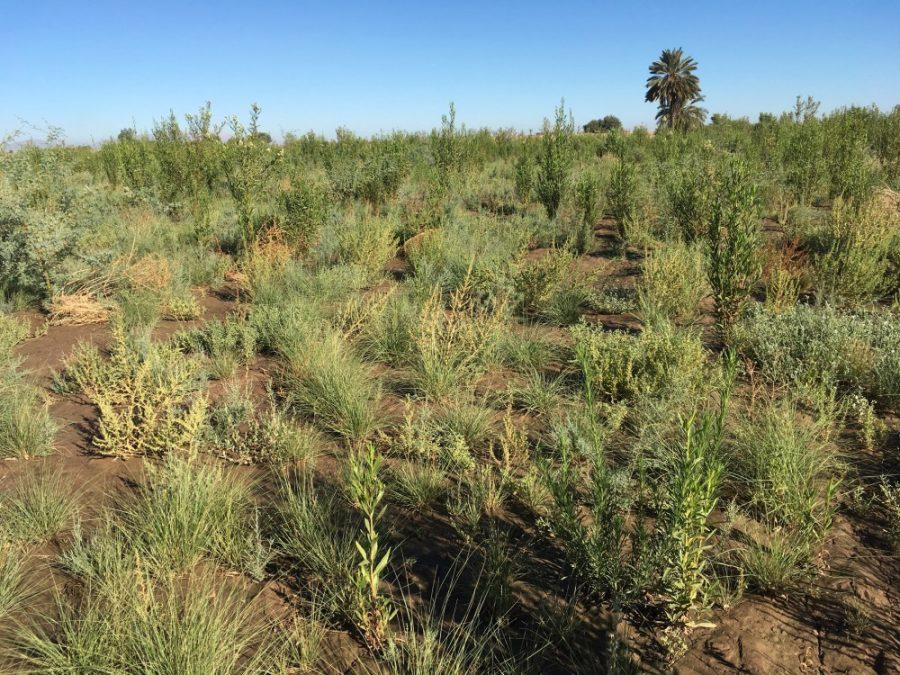The fate of the Colorado River Delta will be decided in coming months as Mexico and the U.S. come closer to reaching an agreement on a water-sharing deal.
The current deal in place, Minute 319, allocated Colorado River water for both Mexico and the U.S. and allowed for restoration water, called a pulse flow, to be delivered to the Colorado River Delta, in hopes of restoring the once-rich habitat.
Over 100,000 acre-feet of water was dumped into the Morelos Dam in the spring of 2014, providing a pulse flow so that restoration efforts could be made, according to Karen Schlatter, adaptive management specialist at the Sonoran Institute.

The goal was to restore 2,300 acres of riparian habitat that had been left barren by the damming of Lake Powell and Lake Mead, according to Schlatter. Interest in the area was sparked by a series of heavy rains in the 80s and 90s caused by El Niño events. The extra flow of water showed glimpses of regrowth that caught the attention of conservation organizations like the Sonoran Institute.
Since then, the Sonoran Institute took on the largest restoration site in the delta, called Laguna Grande.
“Part of that is done is through active restoration techniques,” said Schlatter, who is also the program manager at Laguna Grande. “We’re clearing non-native vegetation and we’re planting native species and irrigating restoration sites.”
RELATED: ”Cellar” of Student Union now Meeting Room
Laguna Grande is a 1,400-acre section of the Colorado River Delta. The Sonoran Institute is on target to restore 800 acres of land for the Minute 319 agreement, according to Schlatter. However, Minute 319 expires this year, and conservationists still have more land to cover in coming years.
“The other part of that is done through passive restoration,” Schlatter said. “With the pulse flow delivery and the base flow deliveries, we’re promoting new establishment of native habitat through natural processes.”
Of the 2,300 acres being worked on, it seems that passive restoration, with help from the pulse flow, has been the primary approach in this project. Schlatter said only about 1,000 acres are being restored through active restoration.
This means that the inclusion of restoration water to the upcoming international deal is crucial to the ongoing revival of this area.
“Our involvement in binational water negotiations is presenting the voice for the environment,” Schlatter said.

Schlatter said that from the start, a coalition of nongovernmental organizations including the Sonoran Institute has lead the charge for inclusion of habitat restoration in water deals. They were successful with the 2012 Minute 319, which ensured a pulse flow release in 2014.
“The pulse flow release provided some temporary and long-term benefits,” Schlatter said. “The shorter-term benefits that we saw was an immediate response of birds particularly drawn to the water, as well as a reduction in soil salinity, a significant increase in groundwater levels and a short-term germination of native plant species.”
Schlatter said as they enter the fifth year of the agreement, three and a half years after the delivery of water, they’ve seen better tree survival — especially in the Laguna Grande restoration site of Sonoran Institute.
“Where we’ve done some active management in coordination with the pulse flow release, we’ve seen very good survival of cottonwood, willow, seep willow … species that all germinated from the pulse flow and have been sustained by base flow deliveries, as well,” Schlatter said.
RELATED: UA to host National Conference on Hispanics in STEM
The Sonoran Institute has been working with the negotiating team over the past two years and Schlatter said they’re hopeful that an agreement will be reached that includes their water allocation.
“In terms of what we think will happen in the upcoming agreement, there’s a whole lot of additional terms besides just providing water for the environment,” Schlatter said. “It’s really a lot about sharing water shortages.”
Both Minute 319 and the upcoming agreement deal mostly with the sharing of water shortages between the two countries in times of drought, according to Schlatter.
“That being said, we are hoping that, similar to 319, there will be an environmental component of the agreement in which there will be water and ongoing restoration throughout the whole next agreement,” Schlatter said.
Follow Chandler Donald on Twitter









